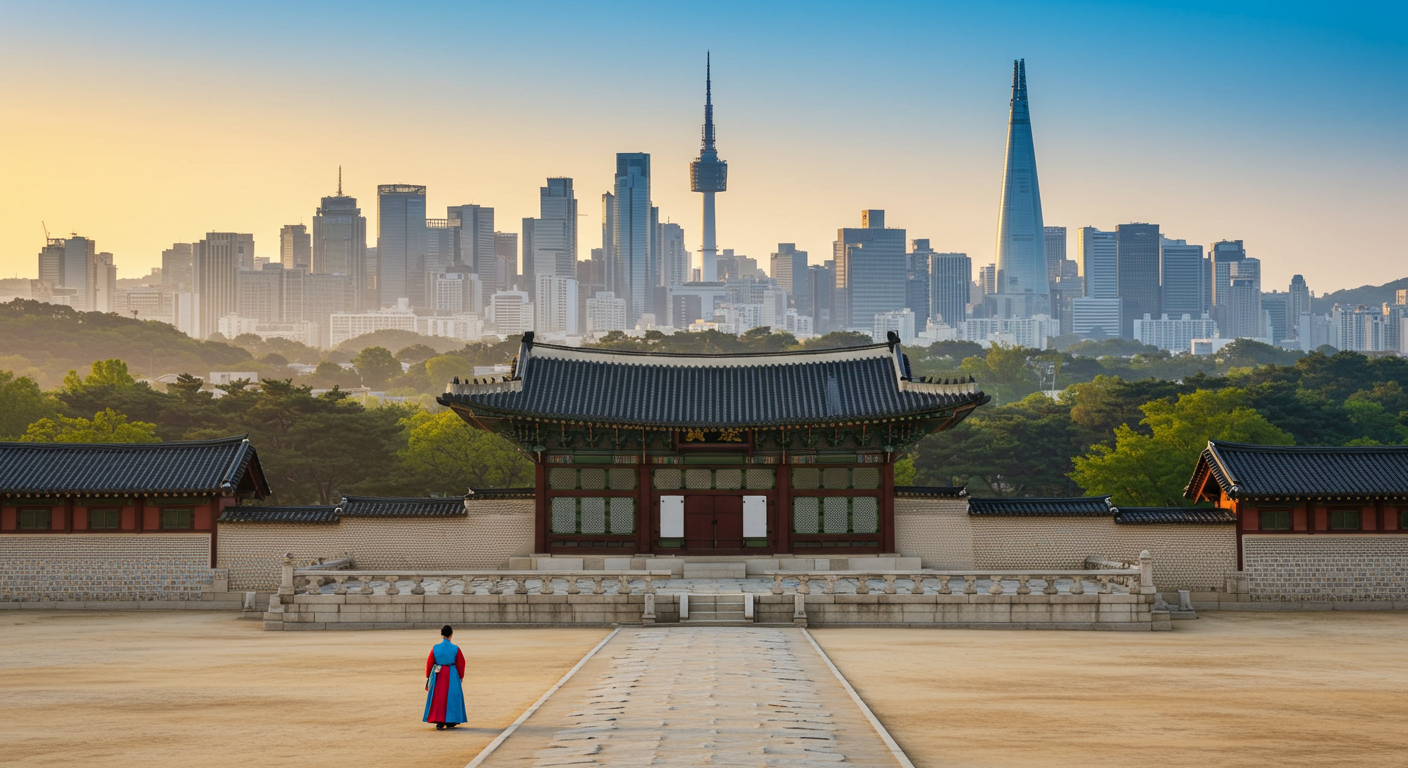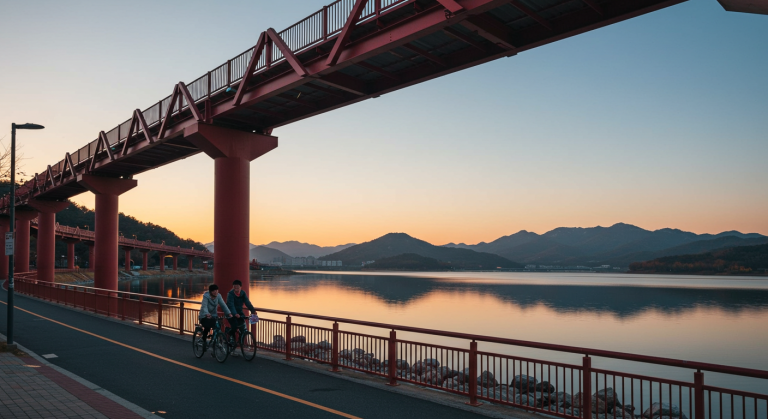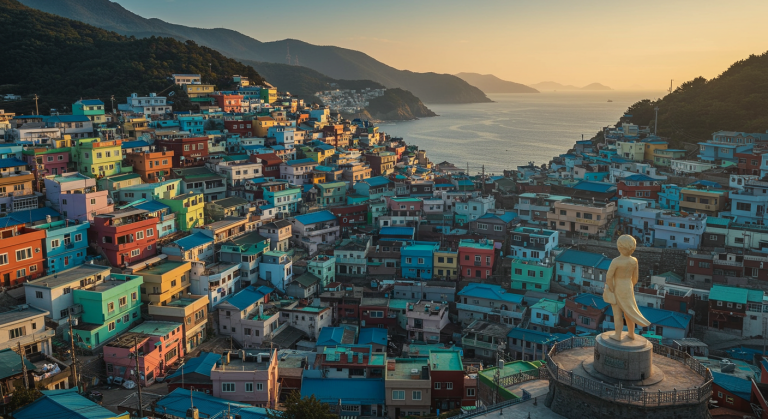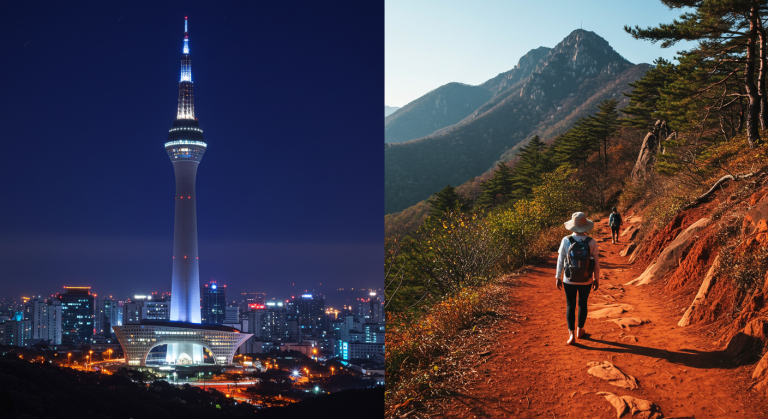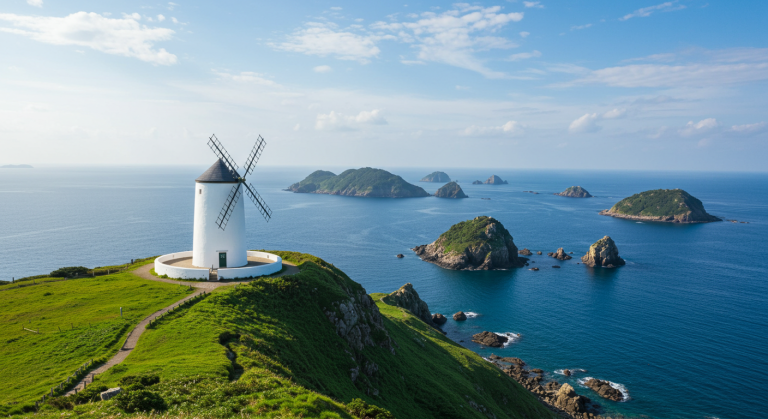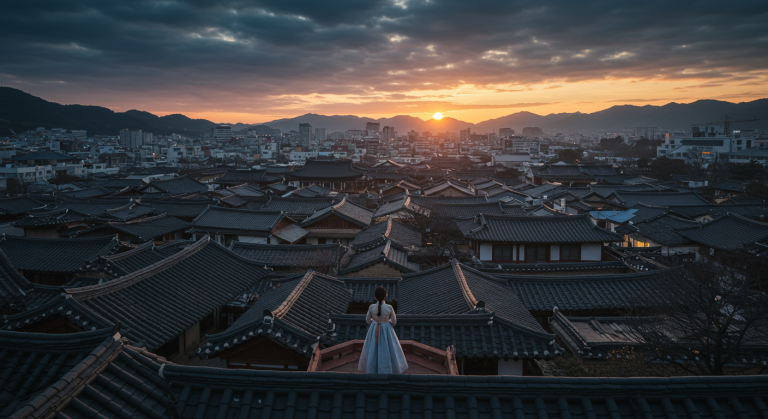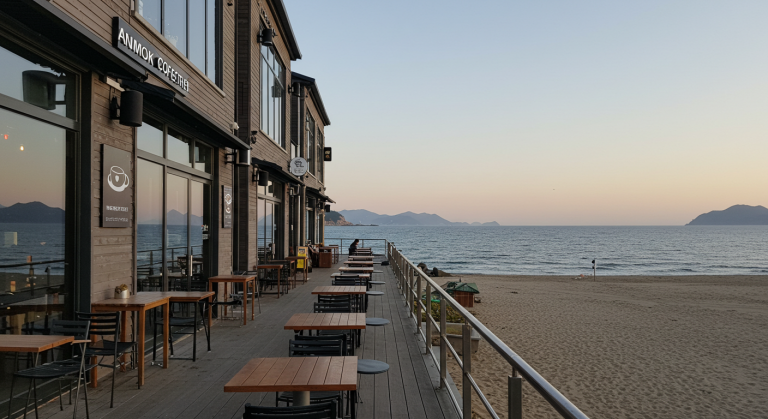The Ultimate Yeongdeok Travel Guide: Snow Crab, Blue Road & Hidden Coastal Gems

Have you ever felt the urge to escape the city’s noise and just breathe in the salty air of the ocean? I know I have, many times!
Yeongdeok, a quiet coastal town in Gyeongsangbuk-do, is exactly the antidote you need.
For a long time, Yeongdeok was just a name synonymous with one thing: its incredible Snow Crab, or Daegae.
But trust me, after my last visit, I realized it’s so much more than a culinary destination; it’s home to the breathtaking Blue Road and some of the most serene sunrise views in all of Korea.
It truly is a hidden gem that deserves your attention.
In this mega-guide, I’m going to walk you through everything, from navigating the stunning coastal highway to finding the best Snow Crab deals and uncovering the historical secrets of this beautiful region.
Let’s dive in and plan your perfect, relaxing Yeongdeok adventure together! 🌊😊
1. Why Yeongdeok? The Hidden Gem of the East Coast 🦀
When most people think of the East Coast (Donghae), cities like Gangneung or Sokcho usually come to mind first.
However, Yeongdeok offers a unique, slower pace that those busier tourist hubs can’t match.
The county’s primary appeal lies in its authentic blend of natural beauty and culinary tradition.
The coastline here is rugged, clean, and less developed, making it ideal for a relaxing getaway where you can truly connect with the ocean.
The official Snow Crab season (Daegae) generally runs from November to May. However, the peak quality months are often cited as January to March. Outside of this period, the crabs sold are often imported or ‘Hongge’ (Red Snow Crab). Always check the local signs at Gangguh Port for the freshest catch!
2. The Yeongdeok Blue Road: Korea’s Premier Coastal Drive 🏞️
The Yeongdeok Blue Road (영덕 블루로드) is hands-down the county’s greatest natural treasure.
It’s a coastal trail that stretches about 64.6 kilometers, divided into four distinct sections (A, B, C, D).
While it’s famous for hiking, it also makes for an incredible scenic drive.
Key Blue Road Sections:
- A-Course (17.5km, ~6hrs): Paljoing – Daejin Beach. Focuses on history and literary sites.
- B-Course (13.5km, ~4hrs): Daejin Beach – Chuksan Port. Features the iconic Chuksan Lighthouse and dramatic cliffs.
- C-Course (17.5km, ~6hrs): Chuksan Port – Gangguh Port. The most scenic and diverse route, combining mountains and sea.
- D-Course (16.1km, ~5hrs): Gangguh Port – Gyeongjeong Beach. A gentle route, famous for the Snow Crab Village and the start/end point of the trail.
My personal recommendation? If you’re driving, focus on the stretches around **Chuksan Port** (B and C) for the most breathtaking, photo-worthy ocean views.
If you’re walking, the C-Course offers a perfect blend of exercise and scenery.
The Blue Road Drive vs. Hike Comparison
| Criteria | Driving | Hiking | Ideal Course |
|---|---|---|---|
| Time Commitment | Half a day (to cover all main spots) | 2 to 4 days (to complete all courses) | B & C (Drive), C (Hike) |
| Accessibility | Excellent (most spots have parking) | Good (well-marked trails) | Driving is highly recommended for first-timers. |
| Core Focus | Viewpoints, Ports, Beaches | Coastal Walk, Tranquility, History | Hiking requires good stamina. |
Some parts of the hiking trail, particularly the B and C courses, involve steep inclines and rocky sections near the cliffs. Always wear appropriate hiking shoes, carry plenty of water, and check the weather forecast before setting out. Do not attempt to walk too close to the edge.
3. Yeongdeok’s Must-Visit Attractions (Beyond the Blue Road) 📸
While the Blue Road is the backbone of the region’s charm, several specific spots along the coast are simply unmissable.
These locations offer unique photo opportunities, historical insights, and chances to relax.
A. The Iconic Spots: Sunrise, Lighthouses, and Crabs
-
Gangguh Port Snow Crab Village (강구항 대게 거리)
This is the beating heart of Yeongdeok’s economy and tourism, especially during the winter season.
The street is lined with dozens of restaurants and seafood shops. The best time to visit is early morning when the fishing boats are coming in with the fresh catch, even if you’re not planning to eat until later. -
Yeongdeok Sunrise Park (영덕 해맞이공원) & The New Millennium Tower
Located near Chuksan Port, this park is famous for being one of the best places in South Korea to watch the sunrise (Haemaji).
The tall, distinctive New Millennium Tower (a massive metal structure) serves as a landmark.
I remember visiting during a crisp winter morning; the view was absolutely magical. -
Chuksan Port Lighthouse (축산항 등대)
This picturesque white lighthouse offers a stunning panoramic view of the sea and the rugged coastline, making it a favorite spot for photographers.
It marks the end of the beautiful coastal drive section of the Blue Road.
B. Hidden Gems and Tranquil Beaches
- Gyeongjeong Beach (경정해수욕장): A smaller, quieter beach compared to others, perfect for a peaceful walk or a secluded swim in the summer.
- Osimni Village & Coastal Trail (오심니): Hidden between the main attractions, this trail offers some of the best untouched scenery of the East Coast, great for a mindful moment.
- Samseongsa Temple (삼성사): A serene Buddhist temple nestled in the mountains near the coastline, providing a quiet retreat and a cultural stop.
4. A Gourmet’s Guide to Yeongdeok Snow Crab (Daegae) 🍽️
Let’s be honest: a trip to Yeongdeok isn’t complete without indulging in the legendary Snow Crab.
It’s arguably the most famous regional delicacy in Korea, and for a good reason!
The sweet, delicate flavor of the meat is unparalleled.
How to Spot the Best Snow Crab
The “Kkeut-daegae” Trap (End Crab)
- The Problem: Some vendors might try to sell you cheaper, inferior crabs, sometimes called ‘Kkeut-daegae’ (end of season/poor quality).
- The Key Difference: A good Snow Crab (Parkdal-daegae, the premium local term) should feel heavy for its size and have bright, distinct colors. The joints and shell should be firm and intact.
The Solution: What to Check
1) Look at the underside: A high-quality crab should have a creamy white or light yellow belly, not a dark brown or black one.
2) Check the activity: Live crabs should be moving their legs vigorously. Never buy a non-moving crab unless it’s immediately cooked.
→ **Final Tip:** Ask the vendor, “Is this Parkdal-daegae?” This shows you know what you are looking for and encourages honesty.
After you’ve picked your crab, the vendor will typically cook it for you by steaming it to perfection.
The true feast includes not just the leg meat, but the shell’s delicious “Gukmul” (crab juice/guts) mixed with rice and sesame oil—a must-try!
5. Planning Your Trip: Accommodation and Transportation 🛣️
Yeongdeok is best explored over a full weekend, giving you time to truly relax and enjoy the coastal atmosphere without rushing.
Here’s a breakdown of the logistics you need.
A. Where to Stay: Gangguh Port vs. Chuksan Port
Your choice of accommodation usually boils down to two main areas: Gangguh Port or the Chuksan area.
Each offers a different travel vibe.
| Area | Vibe | Pros | Cons |
|---|---|---|---|
| Gangguh Port | Lively, Commercial, Food-focused | Best access to restaurants, more hotel options, central. | Can be noisy, crowded during peak crab season. |
| Chuksan Port | Relaxing, Scenic, Nature-focused | Closer to Sunrise Park, quieter, better for Blue Road hiking. | Fewer dining options, requires driving to Gangguh for main crab feast. |
B. Transportation Logistics
Yeongdeok is not easily accessible by KTX or subway, which is why it maintains its charming quietude.
Driving is the most convenient option, but public transport is viable with some planning.
- From Seoul/Busan: Take an express bus to Yeongdeok Intercity Bus Terminal (영덕터미널). The journey takes around 4 hours from Seoul. From the terminal, you’ll need a local bus or taxi to the coast (Gangguh Port is about 15-20 minutes away).
- The Donghae Line Railway: The new Donghae Line connects Pohang (to the south) with Yeongdeok and further north. If you are starting from Busan or Pohang, taking this train line offers some beautiful coastal views, but the stations are often slightly inland.
- Local Travel: Local buses connect the major ports (Gangguh, Chuksan) and the Terminal, but the schedules can be infrequent. A rented car or taxi is highly recommended for exploring the Blue Road.
6. Yeongdeok Trip Cost Estimator (Interactive) 🧮
Let’s calculate a rough budget for your 2-day Yeongdeok trip! This simplified tool will give you a cost estimate based on your transportation and accommodation choices.
🔢 2-Day Yeongdeok Budget Calculator (Per Person)
7. Practical Tips & Cautions for the Perfect Trip 📝
To make sure your journey is as smooth as the East Sea on a calm day, here are a few final thoughts and essential pieces of advice.
These small details can drastically improve your overall experience.
While Snow Crab is king, don't miss out on other local delicacies!
Try the Mulhoe (cold spicy seafood soup) in the summer or the fresh raw seafood (Hwe) at any of the small local ports outside of Gangguh.
The local dried fish (Gwamegi) is also a specialty, particularly delicious during late autumn and winter.
Yeongdeok is generally less visited by international tourists than Seoul or Busan.
English signage can be limited, and many small restaurants or shops may not have English-speaking staff.
Prepare a translation app (like Papago or Google Translate) to help with menus, directions, and hotel check-ins.
Lastly, remember to respect the natural beauty of the area.
The Blue Road is a protected natural trail.
Leave no trace behind and keep the beautiful Yeongdeok coast pristine for everyone to enjoy.
8. Visual Summary: Your Yeongdeok Travel Checklist ✨
Here are the absolute key takeaways from this guide, presented in quick summary cards for easy reference.
Save this section to check off your must-do list!
The Unmissable Experience
Culinary & Crabs Checklist
9. Final Thoughts: Your East Coast Escape Awaits 💙
Yeongdeok is a destination that truly captures the raw, calming beauty of South Korea's East Coast.
It’s a place where the air is clean, the views are stunning, and the food is undeniably world-class.
Whether you’re a solo traveler seeking peace on the Blue Road trails or a family on a culinary quest for the perfect Snow Crab, Yeongdeok has something special to offer.
I hope this comprehensive guide has given you the confidence and the excitement to start booking your next coastal getaway.
Don't wait—the sweet, briny scent of the East Sea and the legendary Snow Crab are calling your name!
Have you been to Yeongdeok?
Do you have a favorite hidden spot along the Blue Road, or a restaurant recommendation?
Share your tips and questions in the comments below—I'd love to hear them and help plan your perfect trip! 🗺️😊
